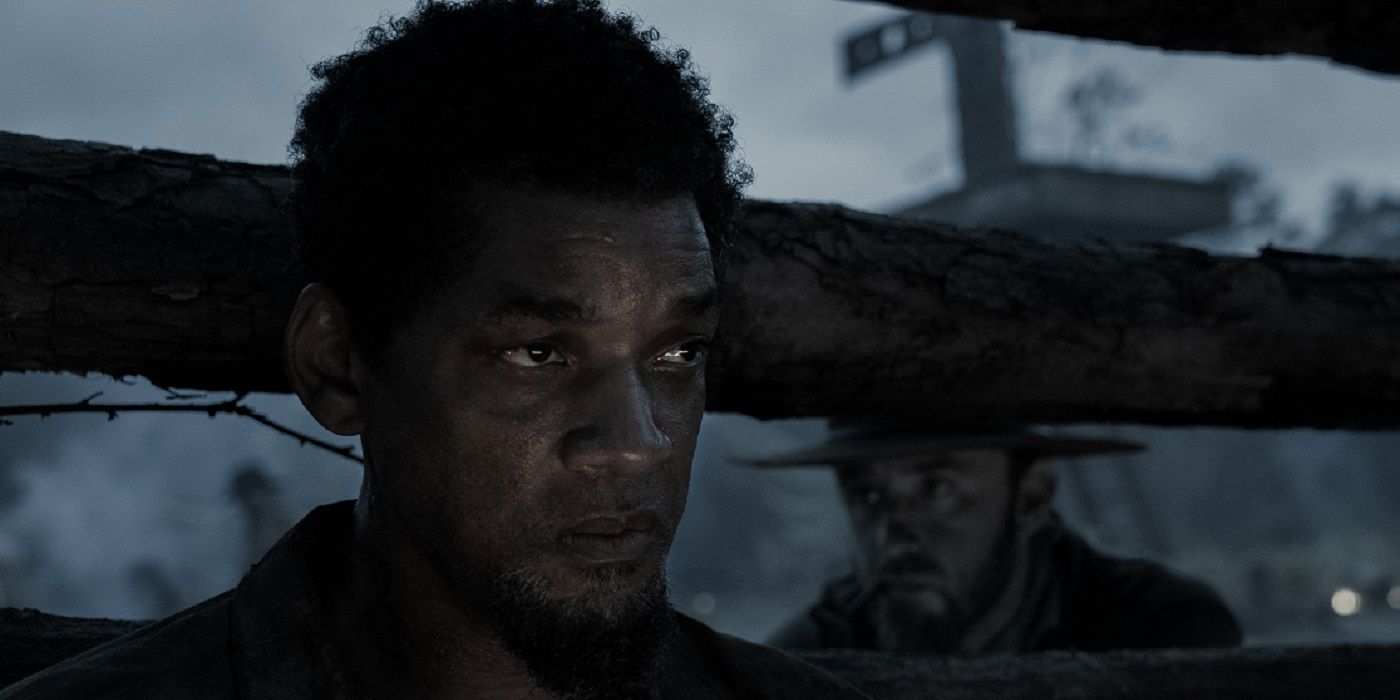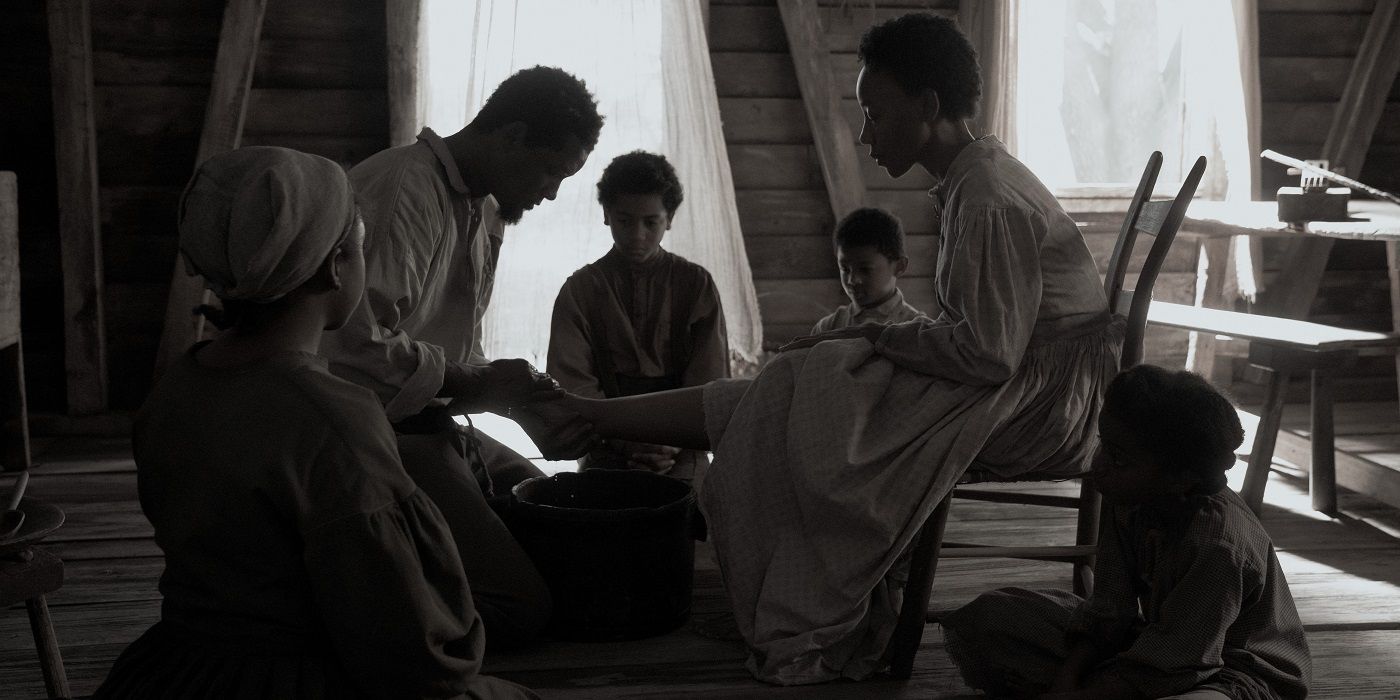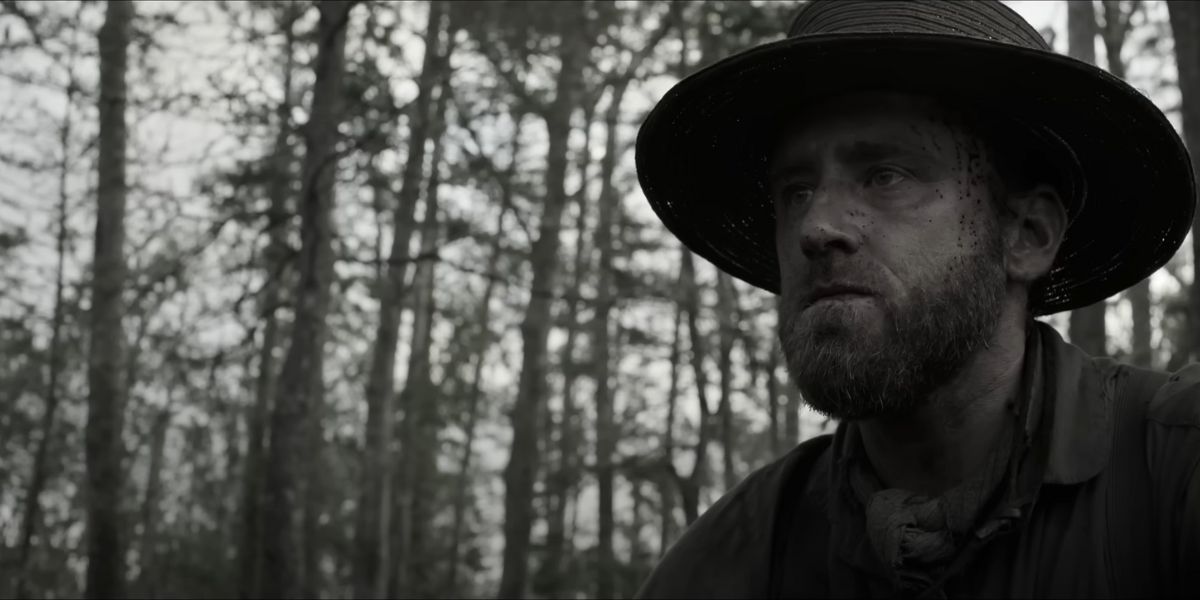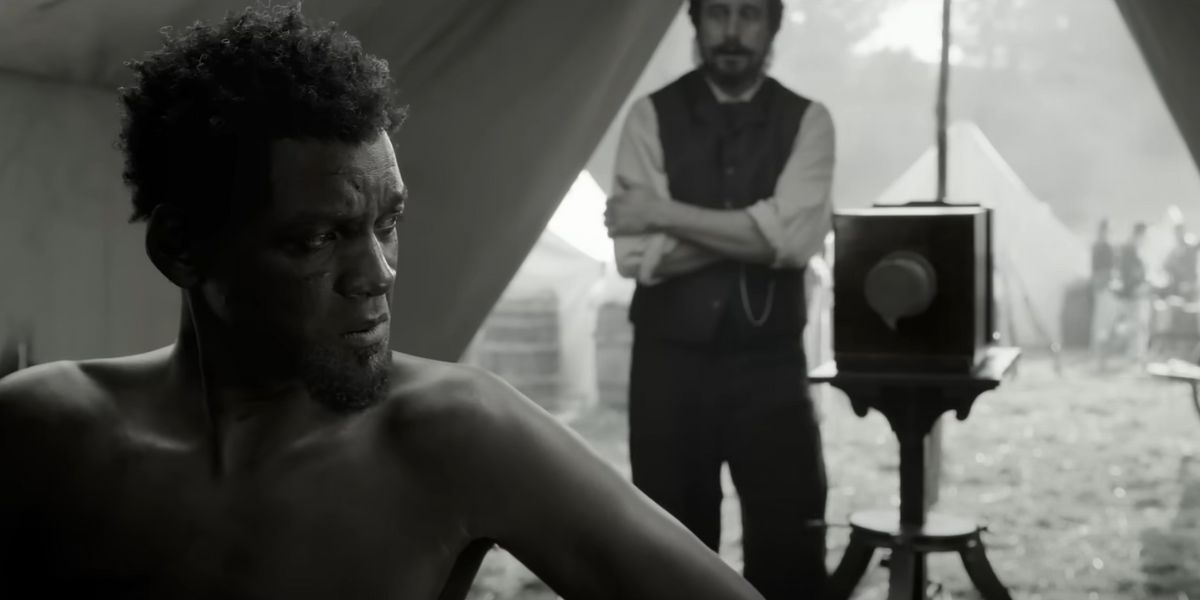Editor's Note: The following contains spoilers for Emancipation.
Antoine Fuqua's new Civil War drama Emancipation bills itself as "based on a true story," the story of an enslaved man who escaped bondage and made his way to Union lines, and whose horrific whipping scars appear in the famous photo that became known as "The Scourged Back." And Fuqua's version does in fact draw a great deal from life, while changing some details and adding some invented backstory to flesh out his characters more fully along the way.
The True Story of Peter
The original photo was taken April 2, 1863, and on the back, the man is identified as Peter, who escaped from the plantation of Captain John Lyons near Washington, Louisiana 10 days prior. Contemporary accounts of Peter's story differ. Because the images of Peter's back were created using a new type of photography that was cheap and easy to reproduce, copies of the picture circulated widely throughout the North and were eventually picked up and printed as an engraving in Harper's Weekly, an abolitionist magazine, on July 4, 1863. In an article titled "A Typical Negro," Harper's refers to the man as Gordon, and recounts how he had escaped through the swamps to the Union camps, evading the slave hunters' bloodhounds by rubbing onions on his body. Gordon had then enlisted in the Union army and was captured by Confederate soldiers who tied him up, beat him, and left him for dead, but he recovered and again escaped back to Union lines.
In actuality, Peter and Gordon were probably two different people. The Harper's article features two additional engravings on either side of "The Scourged Back" in the form of a triptych: the first shows Gordon in the rags he wore when he arrived at the camp; the second shows him in his Union army uniform. Notably, the man in these two images doesn't look much like the man in the middle image, and he appears to be much younger. And indeed, in a letter to the New York Tribune published December 23, 1863, a man who calls himself "Bostonian" claims to be the individual who carried the original photos from Louisiana to the Harper's office and provides more details about the men they depict. Peter and Gordon, the Bostonian writes, were in fact part of a party of four enslaved men who escaped from Lyons' plantation at midnight on March 24, 1863, one of whom, John, was killed by the slave hunter Jim Fassel two days later.
While the Harper's Weekly article is more well-known, the Tribune letter is probably more accurate and matches up with information that Peter himself relayed in an interview with Union soldiers. In Emancipation, Fuqua incorporates elements from both.
'Emancipation' Gives Peter a Family and a Backstory
Will Smith's Peter is Haitian and speaks Haitian Creole, but in reality, like most people enslaved in Louisiana, Peter's first language was actually French. When interviewed at the Union camp, the real Peter described how he had been savagely whipped by the overseer the previous October. After recovering in bed for two months, he was told that he had gone crazy, had burned up his clothes, and had tried to shoot several people, including his own wife. Peter had no memory of doing these things and said his wife also denied that they had happened.
Emancipation omits Peter's supposed episode of craziness completely, as well as the whipping that took place that October (though it doesn't hold back in its depictions of the brutality toward enslaved people). Instead, it opens at the Lyons plantation, where Peter tenderly bathes his wife Dodienne's (Charmaine Bingwa) feet and exhorts his four children always to trust in God, just before he is dragged from his family's tiny cabin by Confederate soldiers to work for the army, part of the tax levied on plantation owners to support the war effort.
At the Confederate camp, Peter meets the three other men he will later escape with — Gordon (Gilbert Owuor), John (Michael Luwoye), and Tomas (Jabbar Lewis). Tomas is young and terrified, and Peter does his best to comfort him when they're chained next to each other at night. John is rebellious; we first see him being dragged back to camp behind Jim Fassel's (Ben Foster) horse, and then branded on his face with a hot iron in the shape of an "R" for "runaway," a real practice among enslavers at the time. Eventually, Peter incites a revolt and the four flee for the swamp and freedom.
We don't know much about the real Jim Fassel, but the Bostonian says that he was "a notorious villain — the fear of every colored person for miles around." Fassel, he claims, had once been part of a party of slave hunters whose dogs had cornered an escaped young man and torn him nearly to pieces; the hunters stopped them from mauling him to death only because they expected to collect a large reward for his capture. Ben Foster plays him with a quiet menace, appropriate for the man who enjoys hunting other men for sport.
In the film, Tomas rather than John is captured immediately, attacked by Fassel's dogs, and shot, while Peter, Gordon, and John split up and make their way through the swamp separately, each with slave hunters hot on his trail. Fassel, sensing that Peter is particularly ingenious and will therefore make the most exciting game, chooses him as his target. True to life, John is later shot by Fassel and his men.
Just before they part ways, the skeptical Gordon warns Peter, "There are many ways to die in a swamp," and during his grueling journey to freedom we see Peter fight off an alligator, encounter a venomous snake, cut leeches from his body, and get swarmed by insects. These scenes are based in fact, as other personal accounts from the period, like Solomon Northup's memoir Twelve Years a Slave, confirm that the Louisiana swamp was indeed filled with hazards — alligators and venomous snakes, mosquitoes, disease — and yet was also constantly filled with runaways, men and women who chose to take their lives into their own hands and face nature's dangers rather than continue to endure the abuse of their enslavers.
The Bostonian tells us that Peter, Gordon, and the third man arrived at the Union camp together, starving and with their feet swollen and bleeding. To elude the hounds, they'd "waded through every stream they could find on their way, twice swimming the turbid waters of the Amite River," and rubbed onions and strongly-scented weeds on their bodies to mask their scent. Emancipation shows this when Peter and Gordon run into each other in the swamp — Peter finds some wild onions, bites them in half, and rubs them over his clothes, but Gordon, again skeptical, runs away, worrying that Peter has led Fassel's dogs to him.
In reality, we don't know whether Peter and Fassel ever crossed paths, nor how Fassel died, but in Emancipation, Fassel catches up to Peter just as he reaches Union lines and is unceremoniously shot in the neck by a Black soldier. In the Union camp, Peter is cared for by the medical staff, and a pair of war photographers, having seen his scars, convince him to pose for a photo so that citizens of the North can see the true horror of slavery for themselves.
Soon after, Peter is informed by the white Union general that he is not actually free, but is rather "contraband" — stolen property — as far as the war is concerned, and he can either go to work on a Union farm or join the colored troops. Peter chooses to join the army and survives at least one horrific battle on his way to the Lyons plantation, where he is finally reunited with his family. Sadly, we don't actually know whether the real Peter was ever reunited with his wife. And although we also don't know if he really enlisted in the army as Harper's claimed, Black soldiers did play a major role in the Union's defeat of the Confederacy. Over 180,000 Black troops — some formerly enslaved and some born free in the North — served during the Civil War, including surgeons, chaplains, and officers.
Peter's picture was one of the most widely circulated and recognizable photos of the abuse of enslaved people, and in Emancipation's final frames, they give credit to the image for becoming "the rallying cry against slavery." While too many films about the era depict enslaved people as resigned and obedient, Emancipation captures the spirit of the thousands who were defiant in the face of horrific punishment, who never stopped running, rebelling, and fighting for their own freedom.





